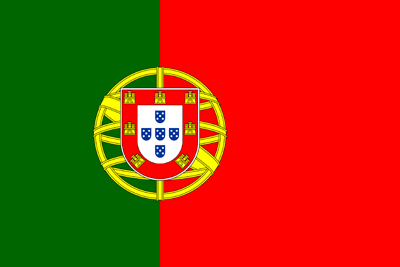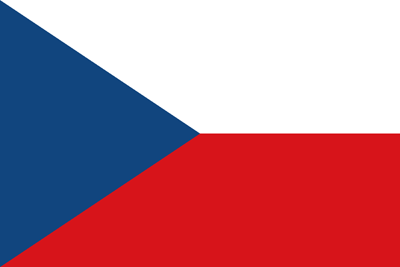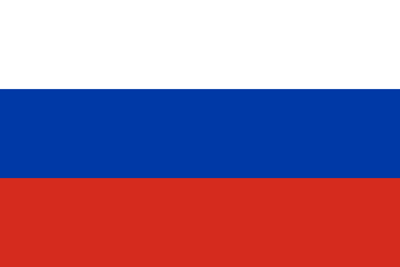Municipal Autonomous General Education Institution "Lyceum No. 4" of the municipal formation of the city of Cheboksary - the capital of the Chuvash Republic
"Reviewed"
Head of the MC
MAOU "Lyceum No. 4"
city of Cheboksary
_____ /______________ /
Protocol No. ____ dated
"___" _________ 2011
"Agreed"
Deputy Director for Educational Work
MAOU "Lyceum No. 4"
city of Cheboksary
_____ /______________ /
"___" _________ 2011
"Approved"
Director
MAOU "Lyceum No. 4" city of Cheboksary
_____ Konovalova N.V.
Order No. ______ dated
"_" _________ 2011
WORK PROGRAM
in Chemistry for students of class 8 B, M
Implementation period: 2011-2012 academic year
The program is based on:
"Chemistry Course Program for Grades 8-11 of General Education Institutions" Yeremin V.V., Kuzmenko N.E., Lunin V.V., Drozdov A.A., Terenin V.I. – Moscow: Drofa, 2008.
Textbook (title, author, publisher, year of publication):
"Chemistry", Yeremin V.V., Kuzmenko N.E., Lunin V.V., Drozdov A.A., Terenin V.I. – Moscow: Drofa, 2006.
Compiled by:
Teacher Lapteva Evgeniya Pavlovna, highest qualification category
Number of hours:
Class
Hours per week
Hours per year
Reserve hours
8
3
102
5
EXPLANATORY NOTE
In the system of natural science education, chemistry as a subject occupies an important place in understanding the laws of nature, in the material life of society, in solving global human problems, in forming a scientific worldview, as well as in fostering ecological culture among people.
Goal of the subject implementation:
To equip students with the basics of chemical knowledge necessary for everyday life, to lay the foundation for further improvement of chemical knowledge in senior classes, and to properly guide students' behavior in the environment.
Objectives of studying chemistry:
To form students' knowledge of the basics of chemical science: the most important factors, concepts, chemical laws and theories, the language of science, and accessible worldview generalizations.
To develop skills to observe and explain chemical phenomena occurring in nature, laboratory, and everyday life.
To form special skills: handling substances, performing simple experiments while following safety rules; correctly applying chemical knowledge in interaction with nature and everyday life.
To reveal the humanistic direction of chemistry, its increasing role in solving major problems facing humanity, and its contribution to the scientific culture of the world.
To develop students' personality: their intellectual and moral improvement, formation of humanistic attitudes, and ecologically appropriate behavior at home and during work activities.
The role of the subject in forming basic knowledge, skills, and key competencies:
This program is implemented in the textbook: Yeremin V.V., Kuzmenko N.E., Lunin V.V., Drozdov A.A. Chemistry. Grade 8. – Moscow: Drofa, 2006.
Differences of the work program from the model:
-
In the Introduction section, practical work "Familiarization with laboratory equipment. Safety rules when working in a chemistry laboratory" is conducted.
-
The number of hours for Topic 1. Initial chemical concepts. (reduced by 2 hours) by compressing the studied material. The study of concepts: valence (moved from Topic 2. Oxygen. Hydrogen. Water. Solutions.), mole, molar mass, mass fraction of an element in a substance was introduced, as they are necessary for performing calculations and composing chemical formulas. Additional hours (4 h) were included to develop skills in solving calculation problems and chemical problems on chemical reaction equations. Special attention was paid to composing reaction equations and observing the law of conservation of mass – 3 h.
-
Topic 2. Oxygen. Hydrogen. Water. Solutions. Practical work "Production of hydrogen, determination of its purity" was included to develop students' skills in conducting chemical experiments on obtaining and collecting gases, as well as determining differences in gases by physical and chemical properties. The concepts of "allotropy" and "allotropic modification" were included, as they are important for forming a scientific worldview in students.
-
Topic 3. Main classes of inorganic compounds. The number of hours was reduced (by 1 h) by compressing the studied material.
-
Topic 4. Periodic Law of D.I. Mendeleev. The study of the concept "coordination number" was replaced by "oxidation state." The concepts of "oxidizing agent" and "reducing agent," "electron balance" were introduced. 3 hours were added for studying the basics of oxidation-reduction.
-
At the end of the year, 5 hours are reserve hours.
Thematic plan
No.
Sections/Topics
Including hours for
Studying new material and reinforcement
Frontal control
1.
Introduction
2
Initial chemical concepts
28
1
3.
Oxygen. Hydrogen. Water. Solutions
24
1
4.
Main classes of inorganic compounds
21
1
5.
Periodic Law of D.I. Mendeleev. Atomic structure. Chemical bond. Structure of substances in solid, liquid, and gaseous states.
22
1
6.
Reserve
5
Total:
102
4
Interdisciplinary connections:
Mathematics (in problem-solving)
Physics (when studying the structure of molecules and atoms, as well as Topic 4 Periodic Law of D.I. Mendeleev, physical properties of substances and their compounds, etc.)
Biology (the importance of chemical elements and their compounds in the life and activity of living organisms, the impact of chemicals on the formation and health of the organism)
Ecology (formation of humanistic attitudes and ecologically appropriate behavior at home and in work activities)
Geography (occurrence of chemical elements and their compounds in nature, ways of most rational application)
Technology (use in food, safety rules) etc.
Requirements for students’ level of training.
As a result of studying chemistry in grade 8, the student must know/understand:
Chemical symbols: symbols of chemical elements, formulas of chemical substances and chemical reaction equations;
Be able to:
Name chemical elements, compounds of studied classes;
Explain the physical meaning of the atomic (ordinal) number of a chemical element, group and period numbers to which the element belongs in the periodic system of D.I. Mendeleev; patterns of property changes of elements within small periods and main subgroups;
Characterize chemical elements (from hydrogen to calcium) based on their position in D.I. Mendeleev’s periodic system and atomic structure features; chemical properties of main classes of inorganic substances;
Determine: composition of substances by their formulas, belonging of substances to a certain class of compounds, types of chemical reactions, valence and oxidation state, type of chemical bond in compounds;
Compose: formulas of inorganic compounds; atomic structure schemes of the first 20 elements of D.I. Mendeleev’s periodic table; chemical reaction equations;
Handle: chemical glassware and laboratory equipment;
Identify: experimentally oxygen, hydrogen, acid and alkali solutions;
Calculate: mass fraction of a chemical element in a substance, mass fraction of substance in a solution, amount of substance, volume or mass based on the amount of substance, volume or mass of reagents or products of a reaction;
Use acquired knowledge and skills in practical activities and everyday life to:
Safe handling of substances and materials;
Ecologically competent behavior in the environment;
Assess the impact of chemical pollution on the human body;
Critically evaluate information about substances used in everyday life;
Prepare solutions of specified concentration.
Forms of knowledge, skills, and abilities control:
-
Conversation (at each lesson to develop students’ ability to correctly speak using chemical terms and concepts) + individual questioning;
-
Independent work;
-
Tests (at the end of each topic);
-
Preparation of creative works and presentations on topics:
Plasma. Fire extinguishing. Fire extinguisher.
Air - a mixture of gases.
Life and work of D.I. Mendeleev. Prediction of properties of not yet discovered elements.
Scientists who studied atomic structure and elementary particles.
Crystals. Methods of growing crystals at home. And others. -
Conducting and presenting home practical works on topics:
Physical and chemical phenomena in human life activities. Signs.
Separation of homogeneous and heterogeneous mixtures.
Solubility of substances in water and its dependence on temperature.
Crystallization upon cooling saturated solutions.
Metals and non-metals in everyday life. Methods of their identification. And others. -
Solving home tasks according to the sample composed in class.
Teaching-methodical complex
List of literature for teachers:
-
"Chemistry Course Program for Grades 8-11 of General Education Institutions" Yeremin V.V., Kuzmenko N.E., Lunin V.V., Drozdov A.A., Terenin V.I. – Moscow: Drofa, 2008.
-
Textbook: Yeremin V.V., Kuzmenko N.E., Lunin V.V., Drozdov A.A. Chemistry. Grade 8. – Moscow: Drofa, 2008.
-
Yeremin V.V. Collection of problems and exercises in chemistry. – Moscow: Publishing House "Onyx 21st Century", 2005.
-
Kim E.P. Chemistry. Grades 8-9. Practical works. – Saratov: Lyceum, 2009.
-
Lidin R.A., Margulis V.B. Chemistry. Didactic materials. Grades 8-9. – Moscow: Drofa, 2002.
-
Radetsky A.M., Gorshkova V.P. Didactic materials in chemistry. Grades 8-9. – Moscow: Prosveshchenie, 2005.
-
Surovtseva R.P., Sofronov S.V. Assignments for independent work in chemistry in grade 8: Teacher's book. – Moscow: Prosveshchenie, 2005.
-
Khomchenko G.P., Khomchenko I.G. Collection of problems in chemistry. – Moscow: Novaya Volna, 2001.
List of literature for students:
-
Textbook: Yeremin V.V., Kuzmenko N.E., Lunin V.V., Drozdov A.A. Chemistry. Grade 8. – Moscow: Drofa, 2008.
-
Kim E.P. Chemistry. Grades 8-9. Practical works. – Saratov: Lyceum, 2009.
-
Lidin R.A., Margulis V.B. Chemistry. Didactic materials. Grades 8-9. – Moscow: Drofa, 2002.
-
Surovtseva R.P., Sofronov S.V. Assignments for independent work in chemistry in grade 8: Teacher's book. – Moscow: Prosveshchenie, 2005.
-
Radetsky A.M., Gorshkova V.P. Didactic materials in chemistry. Grades 8-9. – Moscow: Prosveshchenie, 2005.
List of additional literature, teaching aids, and electronic textbooks:
Nazarova T.S., Kupriyanova N.S. Tables for chemistry for general education school. – Moscow: Varson, 2006.
Vlasenko K.K., Kuznetsova L.V. Series of educational tables in chemistry. – Moscow: Uchbnaya Kniga BIS, 2006.
Nazarova T.S., Lavrova V.N. Reference-instructional tables in chemistry. – Moscow: Shkolnaya Pressa, 2007.
Open Chemistry, course author – Professor MIPT, Academician RAS V.V. Zelentsov. – LLC "Fizikon", 2002.
Intel. Education for the Future., Microsoft, 2006.
Chemistry tutor Kirill and Mefody. – LLC "Kirill and Mefody", 2006.
CD-ROM – 2007. "Theory and Methods of Teaching Chemistry". – ChRIO, Department of Natural Science Education, 2007.
Electronic library "Prosveshchenie". Chemistry. – Moscow: Prosveshchenie, 2002.
Physical Exercise Breaks During Drawing Lessons
25 Years of Our Beloved School: A Heartfelt Reunion and Celebration
Sponsorship Support Provided to Secondary School No. 19 with Advanced Educational Programs in the 2014–2015 Academic Year
Caution: Thin Ice – Stay Safe Near Water in Winter

 Deutsch
Deutsch
 Francais
Francais
 Nederlands
Nederlands
 Svenska
Svenska
 Norsk
Norsk
 Dansk
Dansk
 Suomi
Suomi
 Espanol
Espanol
 Italiano
Italiano
 Portugues
Portugues
 Magyar
Magyar
 Polski
Polski
 Cestina
Cestina
 Русский
Русский